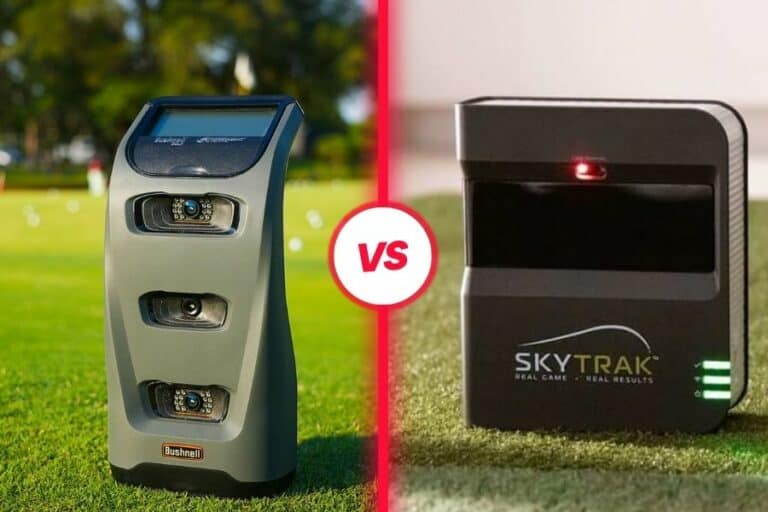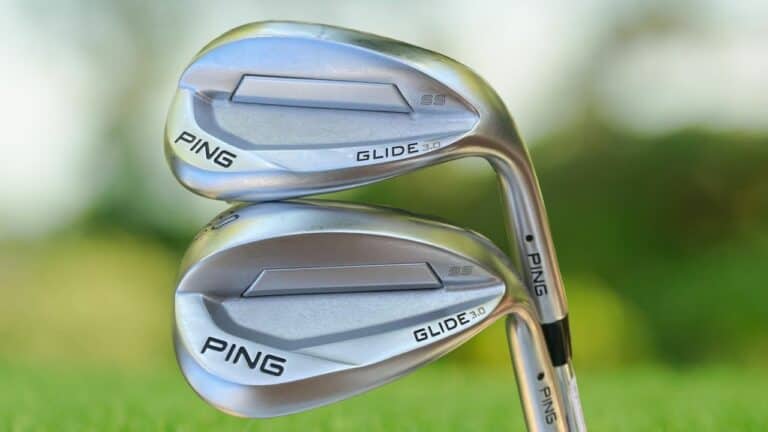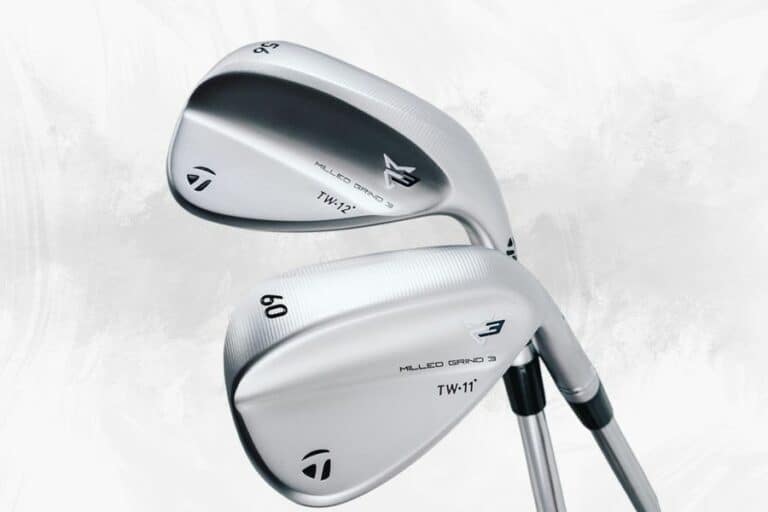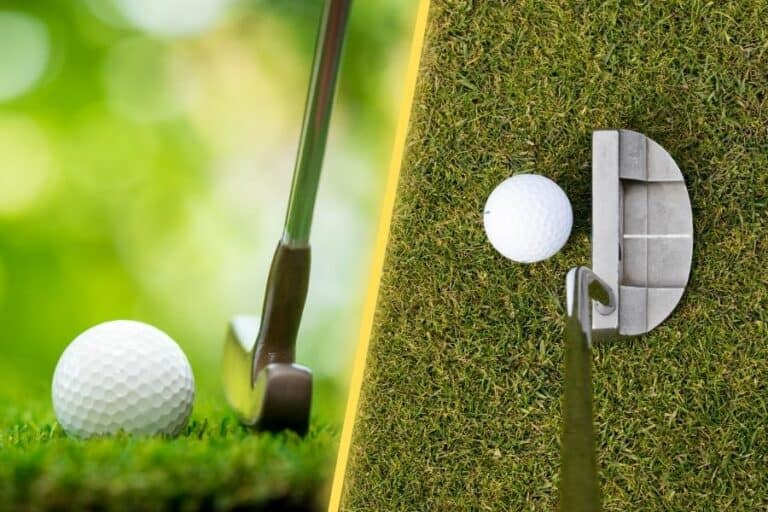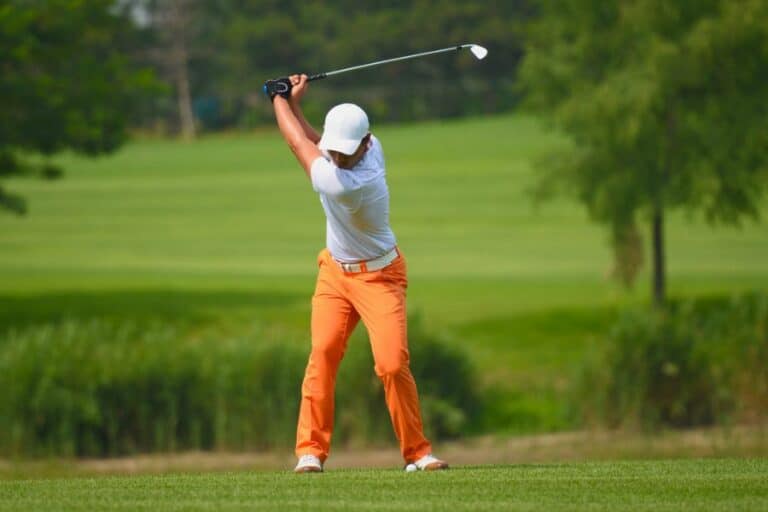Low Spin vs High Spin Golf Balls: What’s Better For You?

Low spin and high spin golf balls each have their own pros and cons that you should consider. Let us analyze Low Spin vs High Spin Golf Balls to determine which type is better for you.
A golf ball’s spin has a considerable impact on your performance, affecting both its travel distance and how it responds to different wind situations.
Low spin balls provide greater distance, while high spin balls deliver precision and control. Nevertheless, there’s more to consider when selecting a golf ball than just distance and accuracy.
I. What is spin in golf ball?
Spin in golf refers to the rotation of the ball during its flight. Backspin and sidespin are the two primary types of spin that influence a golf shot.
Backspin occurs when the upper surface of the ball rotates in the opposite direction to the ball’s flight, creating lift and stability. Sidespin, on the other hand, causes the ball to curve left or right during its trajectory. Controlling spin is essential for achieving accuracy, distance, and optimal shot shaping.
II. Low spin vs high spin golf balls
Typically, golf balls are categorized into three types based on their spin level: low spin, mid spin, and high spin. As mid-spin golf balls are designed to provide a balance between low and high spin, let us focus on the difference between low and high spin balls.
1. Low-spin golf balls
Low-spin golf balls are designed to minimize spin when in flight, offering longer and more penetrating shots off the tee.
These balls typically have a harder construction and are favored by golfers with faster swing speeds who seek reduced side spin and increased control in windy conditions. Low-spin balls also provide enhanced roll on the fairways, maximizing distance.
2. High-spin golf balls
High-spin golf balls are engineered to generate more spin upon impact. With a softer construction, these balls offer increased spin rates, especially around the greens.
The added spin allows for better control and stopping power, making high-spin balls ideal for golfers who prioritize spin control, shot shaping, and precise short-game shots.
III. Golf Ball Construction: Low spin Vs. high spin golf balls
The composition of a golf ball greatly impacts its spin rates. The golf ball’s construction is typically categorized into the core, mantle, and cover. Here is how they differ in each area.
1. Core
The core is the critical part of the golf ball that determines its performance. High-spin golf balls typically have a softer core, while low-spin balls have a harder core.
Compression rating is a useful measurement when it comes to core performance, and it is what makes the difference between low-spin balls and high-spin balls.
Most golf balls typically have a compression rating between 50 to 100. The compression rating in low spin (hard) vs. high (soft) golf balls is as follows:
- Compression rating for low-spin golf balls: 90-120.
- Compression rating for high-spin golf balls: 30-70.
2. Mantle
The mantle in a golf ball, positioned between the core and covers, plays a role in determining the spin characteristics of the ball. A high-spin ball will typically feature a softer mantle, whereas a low-spin ball will typically incorporate a firmer mantle.
3. Cover
The cover is another factor that affects ball performance. The cover primarily affects the feel of the golf balls and the spin rate.
High-spin balls have a cover made of softer material like urethane which provides more spin. Low-spin balls are made with harder materials like ionomer and provide less spin.
IV. Choosing the right golf ball: Low vs. High spin golf balls

There are different performance considerations to take into account when choosing between a low and high-spin golf ball.
1. Distance
A low-spinning golf ball offers a clear advantage in maximizing distance off the tee, delivering longer and more penetrating shots.
With reduced spin, these balls optimize roll and overall yardage by minimizing air resistance. As a result, they provide enhanced roll upon landing, leading to greater coverage on the fairways.
Winner: Low spin balls
2. Accuracy and Control
The added spin provides enhanced stopping power, allowing golfers to better control the ball’s trajectory and achieve more accurate shots. When it comes to hitting precise shots into greens and executing delicate chip shots, high spin balls are the go-to option.
Winner: High spin balls
3. Feel
Low-spin golf balls typically characterized as hard balls, and high-spin golf balls, often referred to as softballs, differ significantly in terms of feel.
Hard balls often give the sensation of hitting a rock, while soft golf balls are more responsive and provide a softer feeling upon impact. Due to this difference, most golfers tend to prefer the comfort and playability offered by soft balls over hard balls.
Winner: High spin balls
4. Shot shaping
If you enjoy shaping shots and manipulating the ball’s flight path, high-spin balls are the clear winners. With their increased spin rates, these balls offer golfers the ability to produce draws, fades, and other specialty shots with greater control.
The added spin allows for more shot-shaping capabilities, providing an advantage for golfers who like to work the ball around the course.
Winner: High spin balls
5. Durability
When it comes to durability, low-spin balls have the edge. Due to their construction and lower spin characteristics, these balls tend to be more durable and resistant to wear and tear.
This makes them a practical choice for golfers who prioritize longevity and value a ball that can withstand numerous rounds of play.
Winner: Low spin balls
V. Benefits and Drawbacks of low spin vs. high spin balls
Both high and low-spin golf balls offer pros and cons. Here is a quick glance for you to understand.
Pros and cons of low spin golf balls
Pros
Cons
Pros and cons of high spin golf balls
Pros
Cons
VI. Best low-spin golf balls – Wilson Tour Velocity Distance Golf Balls

The Wilson Tour Velocity Distance Golf Balls are renowned for their low-spin characteristics, making them a suitable choice for golfers seeking maximum distance and reduced side spin.
Pros
Cons
VII. Best mid-spin golf balls – Bridgestone E6 Golf Balls

The Bridgestone E6 Golf Balls are widely recognized for their mid-spin performance, making them a favorite among golfers seeking a balance of distance and control. These balls feature a soft core that delivers a combination of low driver spin and optimal launch conditions.
Pros
Cons
VIII. Best high-spin golf balls- Titliest Pro V1 and V1x Golf Balls

The Titleist Pro V1 Golf Balls are designed to offer high short game spin and optimal long game spin, making them one of the best high-spin golf balls available in the market. With their 3-piece construction and urethane elastomer cover, they provide a great combination of feel, forgiveness, control, and distance.
Pros
Cons
IX. Do low spin golf balls go straighter?
Yes, low spin golf balls tend to go straighter compared to high spin golf balls. When a golf ball has less spin, it reduces the amount of sidespin and backspin generated during flight. This reduction in spin can lead to straighter shots and potentially greater distance for most golfers.
X. Do low spin golf balls go further?
Low spin golf balls generally provide greater distance compared to other balls. By reducing backspin, these balls achieve increased distance both in the air and upon landing. Backspin, which occurs when the ball is struck with a downward motion, causes the ball to rise during flight.
With less backspin, low spin balls maintain a lower trajectory, encounter less air resistance, and therefore travel farther. Furthermore, these balls tend to roll out more after landing, maximizing the overall distance covered.
XI. Does a high spin golf ball slice more?
Yes, a high spin golf ball is more likely to slice. The backspin that is desirable for controlled stops also generates sidespin, which can occur in any direction. If the ball is not struck with the correct force and angle, this sidespin often leads to slices. To achieve a straighter and more neutral flight, it is advisable to select a golf ball with lower spin.
XII. Should you play with low-spin balls or high spin balls?
The choice between low and high-spin golf balls depends on the golfer’s preferences and abilities.
For golfers with a slow swing speed who prioritize distance, low-spin balls are a more suitable choice. Conversely, golfers with a fast swing speed who value control, accuracy, and the ability to shape shots may find high-spin balls to be ideal.
Conclusion
Choosing the right golf ball makes a lot of difference in playing golf. Low-spin and high-spin golf balls both have their own set of advantages and disadvantages that should be taken into account when making a decision. Ultimately, the type of ball that suits each golfer’s needs and capabilities will depend on their individual preferences and style of play.



